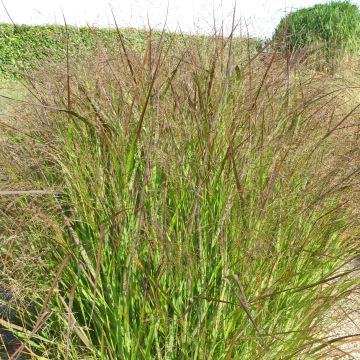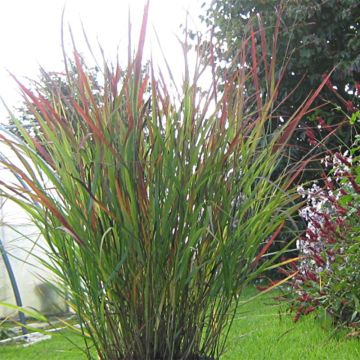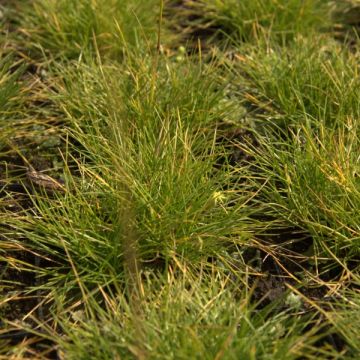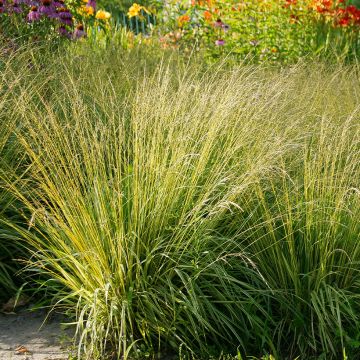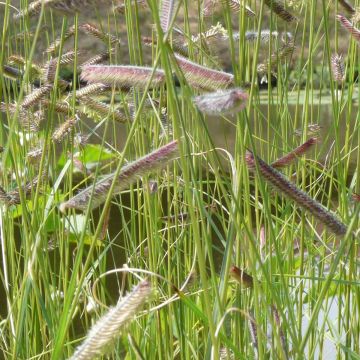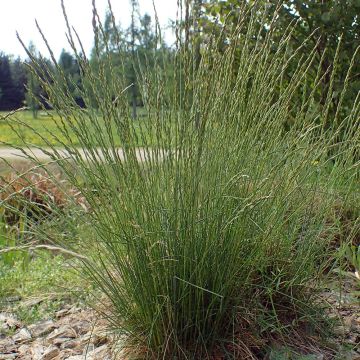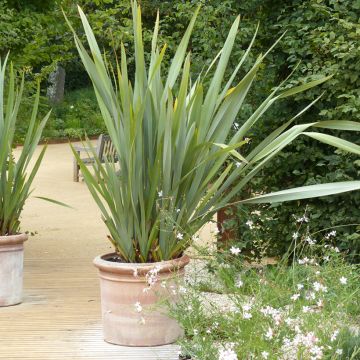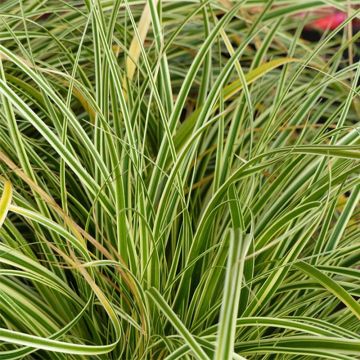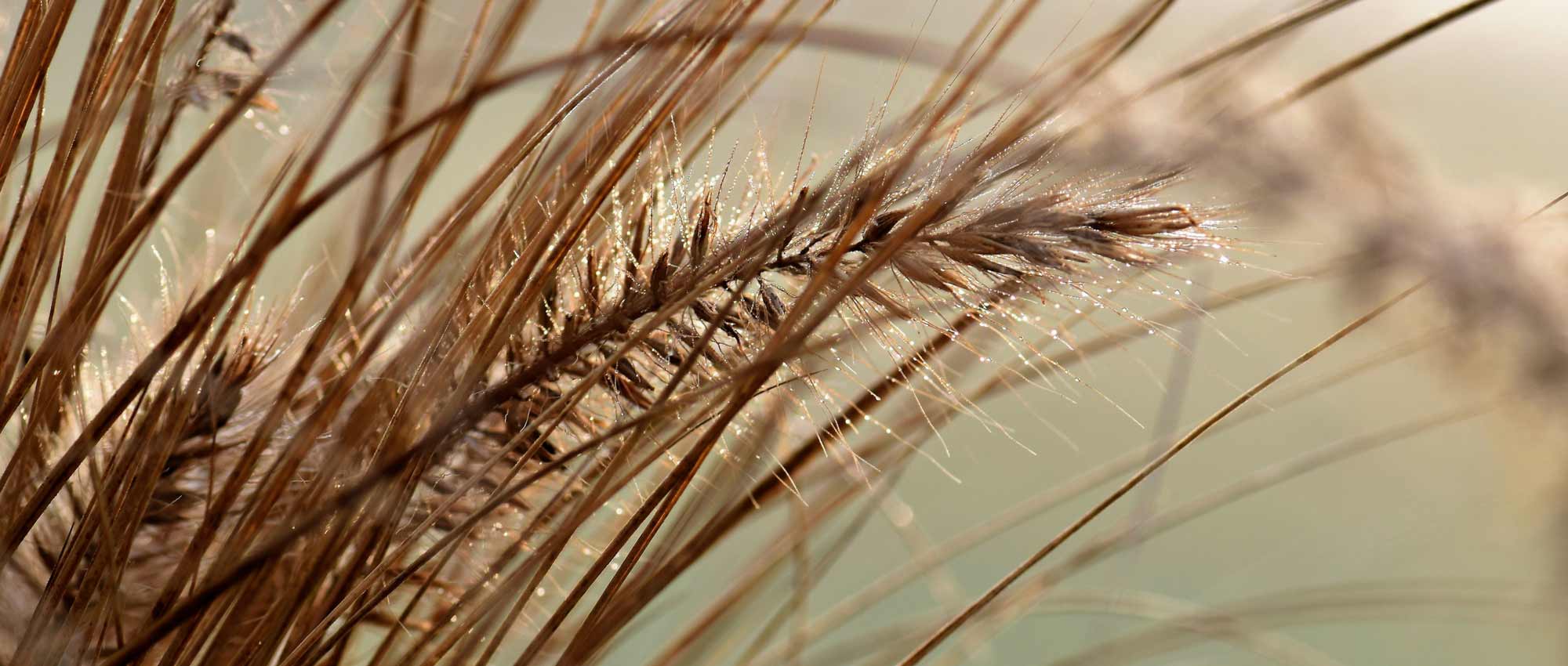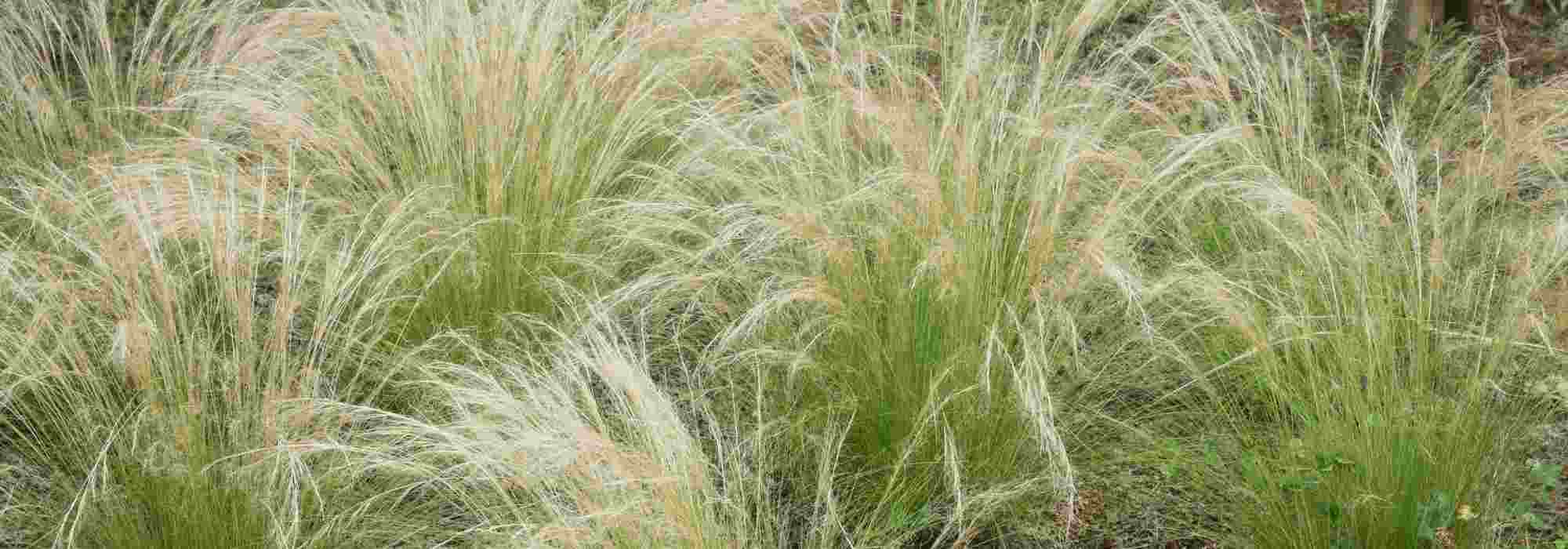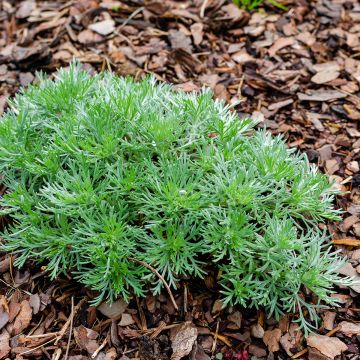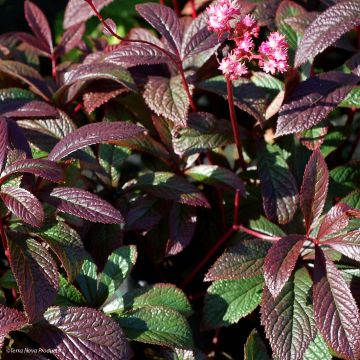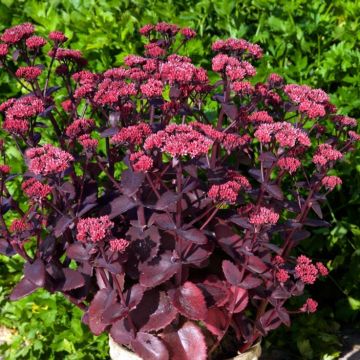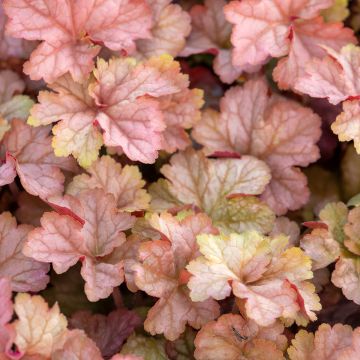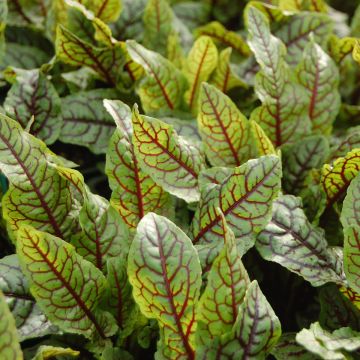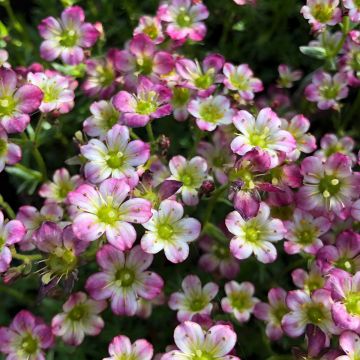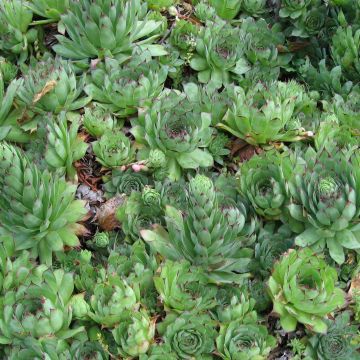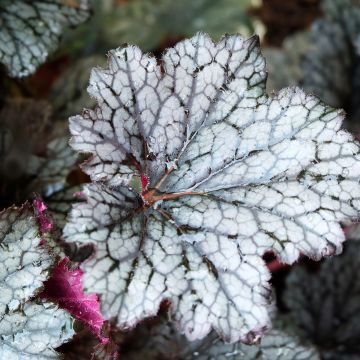

Sorghastrum nutans Sioux Blue
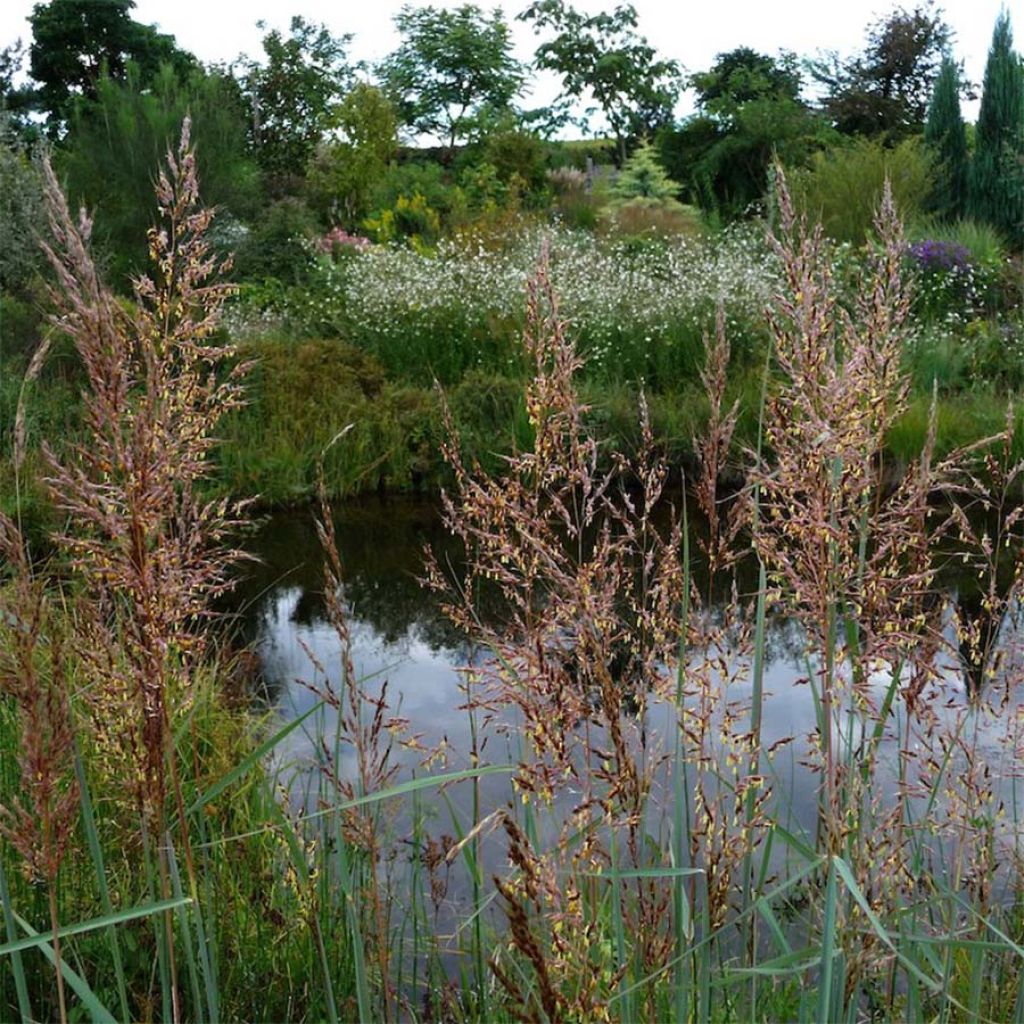

Sorghastrum nutans Sioux Blue
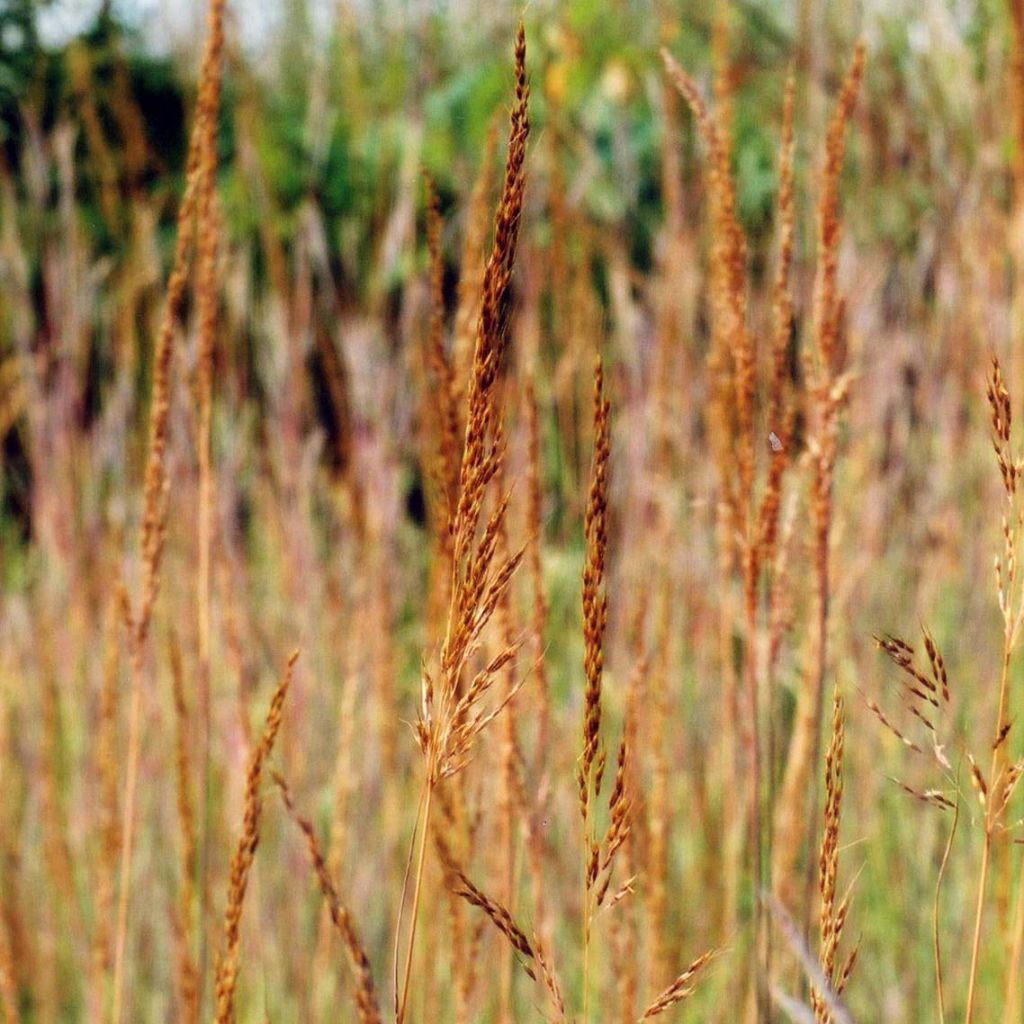

Sorghastrum nutans Sioux Blue
Sorghastrum nutans Sioux Blue
Sorghastrum nutans Sioux Blue
Indian Grass, Yellow Indian Grass
Planted in January 2022, in the Var. I am in a challenging location, capable of transforming into a temporary pool, yet very dry, not just in summer. It hasn't rained in 2022, neither in autumn, nor in winter, nor in spring. However, it has survived next to a huge rush, without watering. The sandy loamy soil must please it, even though it has grown very little (the clump is spreading but only 20 cm (8in) tall). Takes on impressive red hues in autumn. To be continued, I am eager to see it grow.
Laurence, 05/11/2023
Special offer!
Receive a €20 voucher for any order over €90 (excluding delivery costs, credit notes, and plastic-free options)!
1- Add your favorite plants to your cart.
2- Once you have reached €90, confirm your order (you can even choose the delivery date!).
3- As soon as your order is shipped, you will receive an email containing your voucher code, valid for 3 months (90 days).
Your voucher is unique and can only be used once, for any order with a minimum value of €20, excluding delivery costs.
Can be combined with other current offers, non-divisible and non-refundable.
Home or relay delivery (depending on size and destination)
Schedule delivery date,
and select date in basket
This plant carries a 12 months recovery warranty
More information
We guarantee the quality of our plants for a full growing cycle, and will replace at our expense any plant that fails to recover under normal climatic and planting conditions.
Would this plant suit my garden?
Set up your Plantfit profile →
Description
Sorghastrum nutans Sioux Blue is a variety of false sorghum that distinguishes itself from the species with its more upright habit and beautiful blue foliage adorned with metallic highlights, turning yellow-orange in autumn. This perennial grass also has magnificent flowers which fade into brown and feathery spikes covered in brilliant gold. It remains beautiful and charming until the heart of winter. It is robust despite difficult conditions and cold weather, anchoring its crown among rocks or plunging into muddy waters, it will need full sun to reveal its splendour.
Sorghastrum nutans is a non-suckering plant of the poaceae family, endemic to the high plains of North America, but also present from southern Manitoba in Canada to Texas. Vigorous, accustomed to fierce competition with other plants and well-adapted to difficult conditions, it withstands cold and drought and tolerates poor soil. The 'Sioux Blue' variety forms an upright tuft, 1.20 m (4ft) tall when in bloom, with a width of 30 cm (12in), slowly extending to form a very upright, graceful shape. It is composed of a basal rosette of flexible, linear, bluish leaves, and erect stems that bear slender inflorescences in summer. These narrow clusters, 15 to 35 cm (6 to 14in) long, carry slender spikelets with many small brown flowers and yellow stamens, ripening in autumn to a golden and shiny hue, then turning grey. It will self-seed in good conditions.
Sorghastrum nutans Sioux Blue maintains its upright habit and colourful foliage until the heart of winter, remaining highly decorative in the garden. It withstands anything, so is very useful in ornamental dry gardens or inhospitable, clayey and waterlogged or poor or sandy soil. It pairs well with hyssops, catmints, and wormwoods. To accentuate its height it can be combined with hybrid mulleins or hollyhocks, or, to play with contrasting forms, it can be paired with prostrate and easy-to-grow plants like Juniperus x pfitzeriana 'Old Gold', Rubus tricolor, or Microbiota decussata. A beautiful natural bed, reminiscent of vast wild spaces, can be created by combining it with three wonderful grasses known as Andropogon gerardii, Panicum virgatum Squaw, and Schizachyrium scoparium, adorned with a few clumps of Helianthus and Echinaceas.
Report an error about the product description
Sorghastrum nutans Sioux Blue in pictures
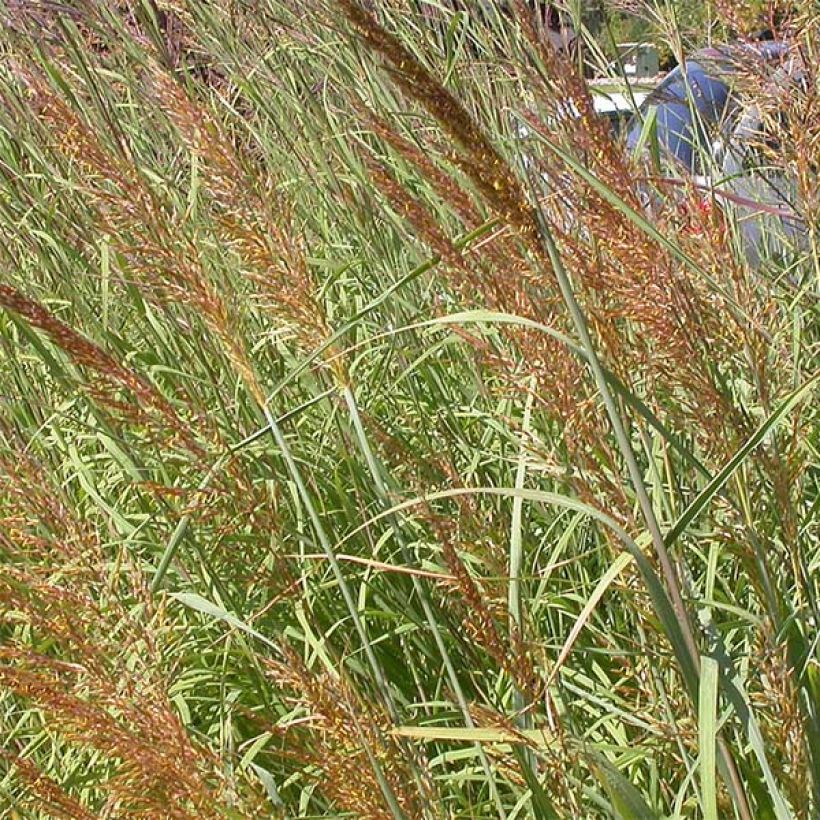



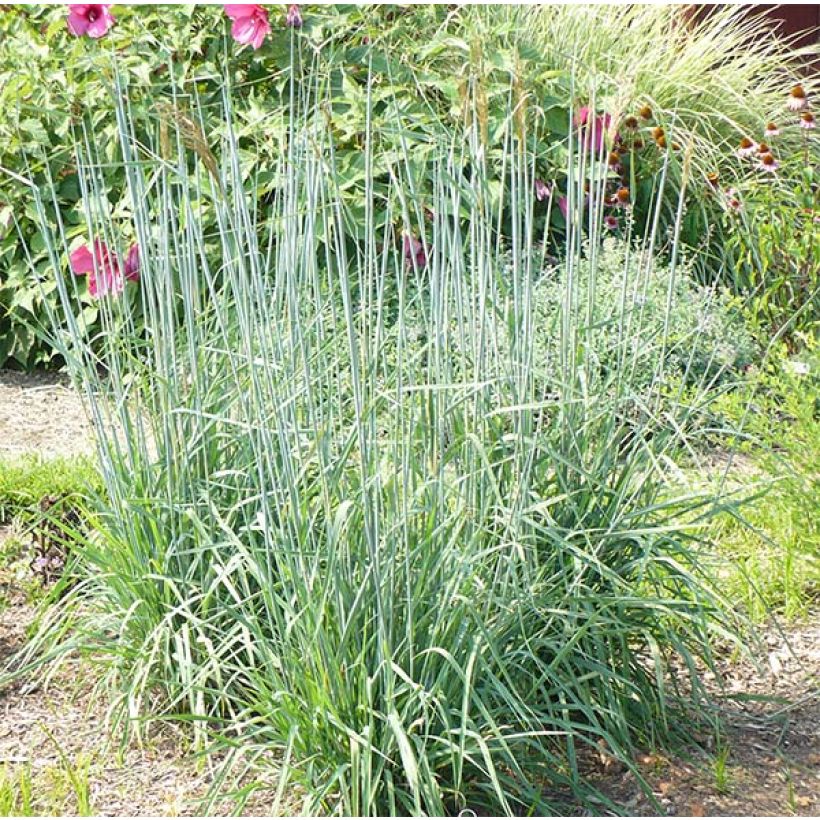

Flowering
Foliage
Plant habit
Botanical data
Sorghastrum
nutans
Sioux Blue
Poaceae
Indian Grass, Yellow Indian Grass
North America
Other Ornemental grasses A to Z
View all →Planting and care
Sorghastrum nutans retains excellent resistance to cold and summer drought from its origins. Accustomed to living in the vast North American prairies where competition between grasses is intense, it requires a very open and sunny exposure to thrive, but can adapt to almost any soil, even dry in summer, or conversely clayey. it doesn't like overly rich, shaded and excessively humid soils, where it can live, but not for long. Cut back the dried foliage at the end of winter.
Planting period
Intended location
Care
Planting & care advice
-
, onOrder confirmed
Reply from on Promesse de fleurs
Similar products
Haven't found what you were looking for?
Hardiness is the lowest winter temperature a plant can endure without suffering serious damage or even dying. However, hardiness is affected by location (a sheltered area, such as a patio), protection (winter cover) and soil type (hardiness is improved by well-drained soil).

Photo Sharing Terms & Conditions
In order to encourage gardeners to interact and share their experiences, Promesse de fleurs offers various media enabling content to be uploaded onto its Site - in particular via the ‘Photo sharing’ module.
The User agrees to refrain from:
- Posting any content that is illegal, prejudicial, insulting, racist, inciteful to hatred, revisionist, contrary to public decency, that infringes on privacy or on the privacy rights of third parties, in particular the publicity rights of persons and goods, intellectual property rights, or the right to privacy.
- Submitting content on behalf of a third party;
- Impersonate the identity of a third party and/or publish any personal information about a third party;
In general, the User undertakes to refrain from any unethical behaviour.
All Content (in particular text, comments, files, images, photos, videos, creative works, etc.), which may be subject to property or intellectual property rights, image or other private rights, shall remain the property of the User, subject to the limited rights granted by the terms of the licence granted by Promesse de fleurs as stated below. Users are at liberty to publish or not to publish such Content on the Site, notably via the ‘Photo Sharing’ facility, and accept that this Content shall be made public and freely accessible, notably on the Internet.
Users further acknowledge, undertake to have ,and guarantee that they hold all necessary rights and permissions to publish such material on the Site, in particular with regard to the legislation in force pertaining to any privacy, property, intellectual property, image, or contractual rights, or rights of any other nature. By publishing such Content on the Site, Users acknowledge accepting full liability as publishers of the Content within the meaning of the law, and grant Promesse de fleurs, free of charge, an inclusive, worldwide licence for the said Content for the entire duration of its publication, including all reproduction, representation, up/downloading, displaying, performing, transmission, and storage rights.
Users also grant permission for their name to be linked to the Content and accept that this link may not always be made available.
By engaging in posting material, Users consent to their Content becoming automatically accessible on the Internet, in particular on other sites and/or blogs and/or web pages of the Promesse de fleurs site, including in particular social pages and the Promesse de fleurs catalogue.
Users may secure the removal of entrusted content free of charge by issuing a simple request via our contact form.
The flowering period indicated on our website applies to countries and regions located in USDA zone 8 (France, the United Kingdom, Ireland, the Netherlands, etc.)
It will vary according to where you live:
- In zones 9 to 10 (Italy, Spain, Greece, etc.), flowering will occur about 2 to 4 weeks earlier.
- In zones 6 to 7 (Germany, Poland, Slovenia, and lower mountainous regions), flowering will be delayed by 2 to 3 weeks.
- In zone 5 (Central Europe, Scandinavia), blooming will be delayed by 3 to 5 weeks.
In temperate climates, pruning of spring-flowering shrubs (forsythia, spireas, etc.) should be done just after flowering.
Pruning of summer-flowering shrubs (Indian Lilac, Perovskia, etc.) can be done in winter or spring.
In cold regions as well as with frost-sensitive plants, avoid pruning too early when severe frosts may still occur.
The planting period indicated on our website applies to countries and regions located in USDA zone 8 (France, United Kingdom, Ireland, Netherlands).
It will vary according to where you live:
- In Mediterranean zones (Marseille, Madrid, Milan, etc.), autumn and winter are the best planting periods.
- In continental zones (Strasbourg, Munich, Vienna, etc.), delay planting by 2 to 3 weeks in spring and bring it forward by 2 to 4 weeks in autumn.
- In mountainous regions (the Alps, Pyrenees, Carpathians, etc.), it is best to plant in late spring (May-June) or late summer (August-September).
The harvesting period indicated on our website applies to countries and regions in USDA zone 8 (France, England, Ireland, the Netherlands).
In colder areas (Scandinavia, Poland, Austria...) fruit and vegetable harvests are likely to be delayed by 3-4 weeks.
In warmer areas (Italy, Spain, Greece, etc.), harvesting will probably take place earlier, depending on weather conditions.
The sowing periods indicated on our website apply to countries and regions within USDA Zone 8 (France, UK, Ireland, Netherlands).
In colder areas (Scandinavia, Poland, Austria...), delay any outdoor sowing by 3-4 weeks, or sow under glass.
In warmer climes (Italy, Spain, Greece, etc.), bring outdoor sowing forward by a few weeks.































